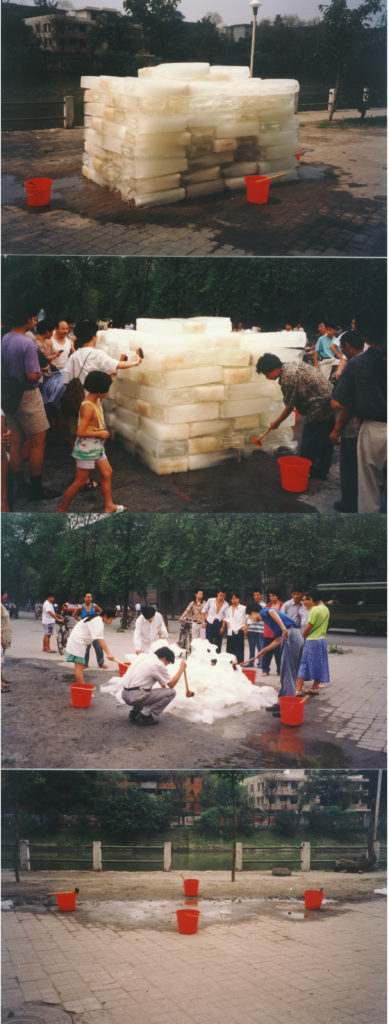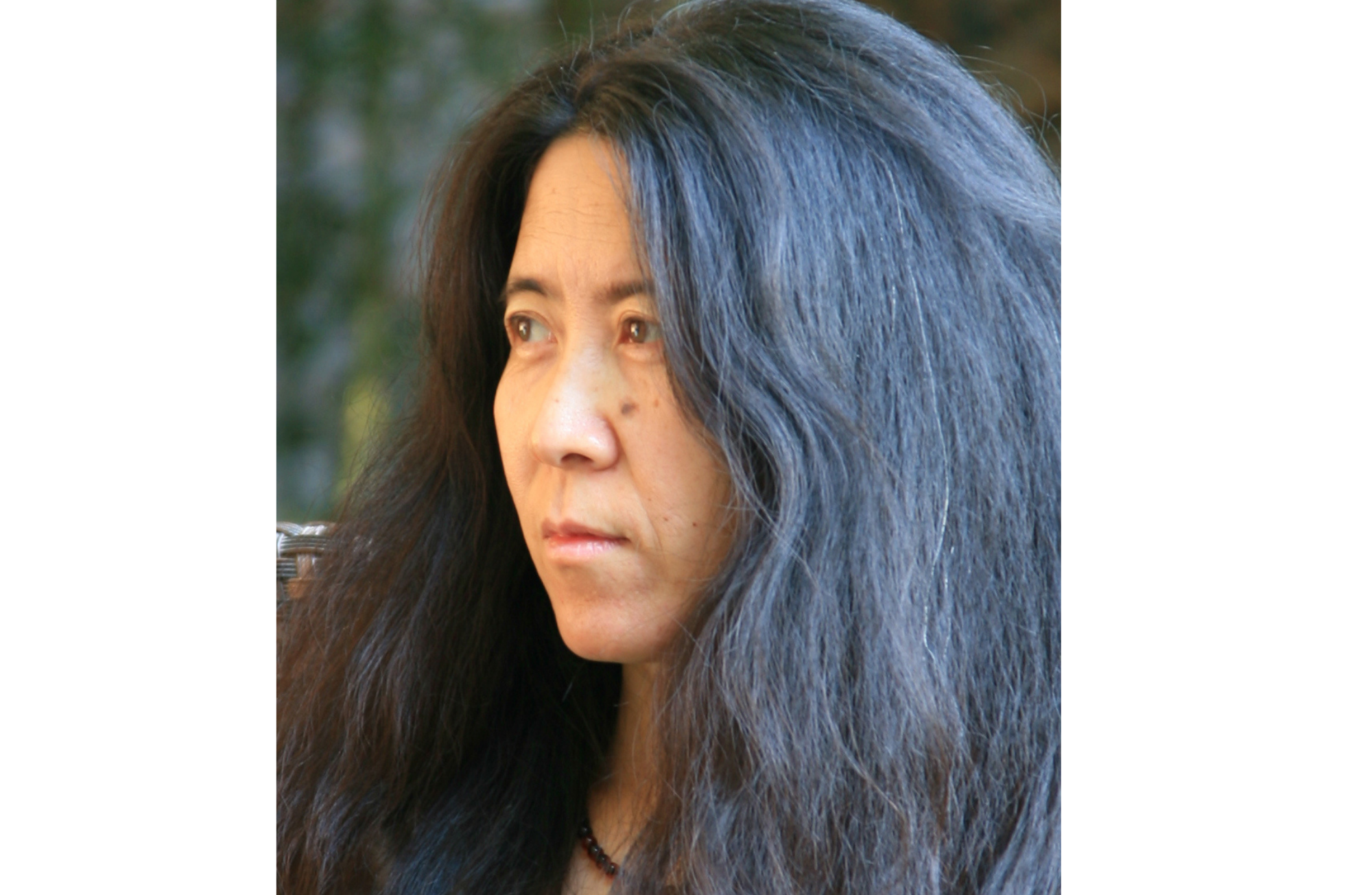Your work raises awareness of the effects of globalization, including its consequences on the environment and urbanization. How did these issues appear in your work?
In the 1990s, the end of the Cold War moved the world from confrontation to integration. The rise of the internet and the easier access to transportation increased international communication. Travel, drastic changes in the natural environment, and the impact of large-scale urbanization has changed people’s lives. I wanted to express my own understanding of the impact of globalization through art.
My works “Washing the River” and “Abandoned Capital”, both made in the 1990’s, deal with issues of environment and urbanization. Since 2001, I have been working on the “Portable City” series. During my city travels, I have collected used clothes that have been worn by the inhabitants, allowing me to connect with the real-life experiences of locals and their livelihoods. I sculpt my own representation of the city and its inhabitants by sewing these clothes into a portable suitcase, so these sculptures can easily travel. So far “Portable City” has been created in 43 different cities around the world. Each creation is a form of communication between the city and the rest of the world. With this work, I am able to grasp these different cultures, and the daily life is embodied through the clothes people wear. These garments are mixing global issues and people’s intimacy, they are symbols of globalization and urbanization. They speak about climate, and they also carry the emotions and feelings of the individuals who wore them.

Why are textiles one of your main materials?
I use a large amount of used clothes as materials for my creations. Although these are textiles, I value the invisible but perceptible things attached to these textiles. I define clothes as the “second skin of humans”—it being one of of our “social skins”. Connected to the “social skin” and soft fabric materials, the garments say a lot about social division of labor, aesthetic trends, and so on. Clothes reveal many things about a person: the body, gender, age, style, and standard of living, each aspect portraying a single form of communication. Once worn, each piece of clothing carries the importance of the wearer’s experiences, memories and life values, telling an invisible story from the time they were worn. Alone, the textiles convey one aspect of the work, but it is the soul of the textiles that conveys my understanding of the world.

Your interventions are often participative (“Washing the River” 1995, “Portable Cities” 2002) and immersive (“Collective Subconscious” 2007, “Thought” 2009). Why are these dimensions important to you?
The human element is a crucial factor in that people need to support, communicate, and co-exist with each other. I hope that different pieces of work can unite us in an artistic way, allowing viewers to see new perspectives other than just the “dimension of the look”

How is your work received in China?
Great changes have taken place in China since the 1990s, and the acceptance of contemporary art has changed dramatically. Each time I present my work, I still get a lot of support and participation. The public’s awareness of environmental protection and participation in social environmental transformation is constantly improving, while the influence of contemporary art among the public continues to grow.
How would you define your role as an artist – if an artist has to have one?
Everyone’s purpose and role is quite different, however as an artist, it is our role to tell the tale of diversity by enriching each story. With each artist, creativity and creative freedom is what everyone sees, but kindness, tolerance, and responsibility to society play equally important roles.
What contemporary issues are you most engaged in at the moment?
How a world that has been divided by differing values, exacerbated by the pandemic, can return to freedom. How to find practical solutions and directions to the problem of the world’s environment and climate deterioration.
What are your future projects?
I am currently working on a solo exhibition at the Shanghai Museum of Glass.
In conversation with Alice Audouin & Lou Anmella-de Montalembert
With the kind help of Pace Gallery.
Translated from Chinese by Pace Gallery.
In partnership with ACA Project
November 2021
Credits:
Portrait of Yin Xiuzhen: Courtesy of the artist
Yin Xiuzhen, « Portable City, Shanghai », 2002 – Courtesy : PACE Gallery
Yin Xiuzhen, « Thought », 2009 – Courtesy : PACE gallery
Yin Xiuzhen, « Washing river », 1995 – Courtesy : PACE gallery
Find all the articles from Impact Art News n°35 – November/December 2021
To subscribe to Impact Art News (free) : here

